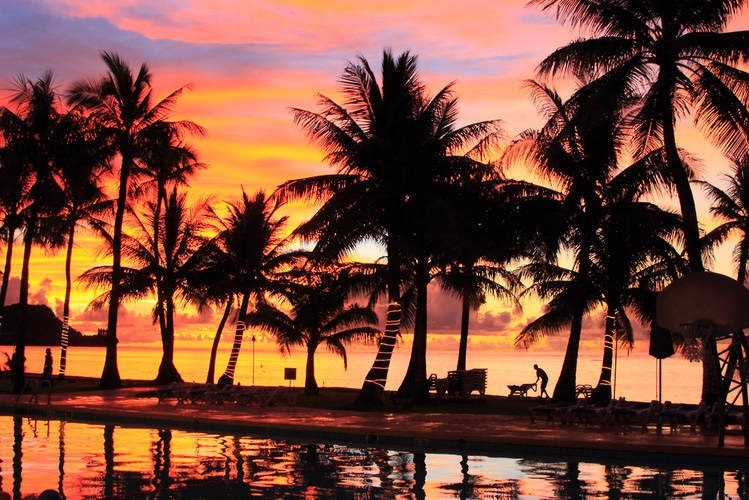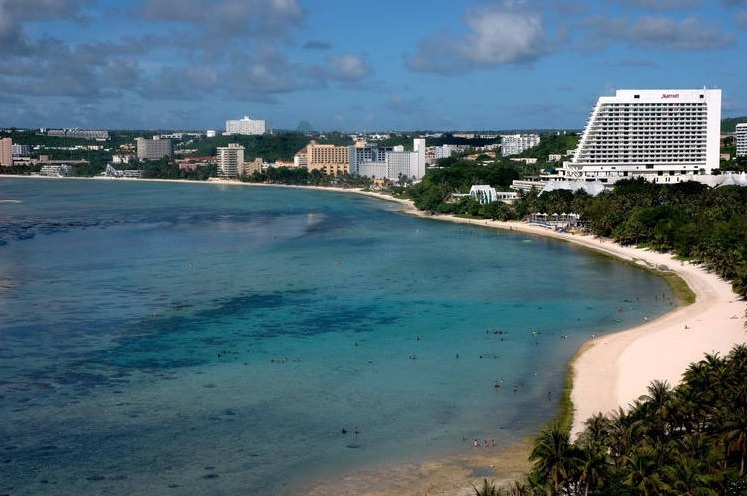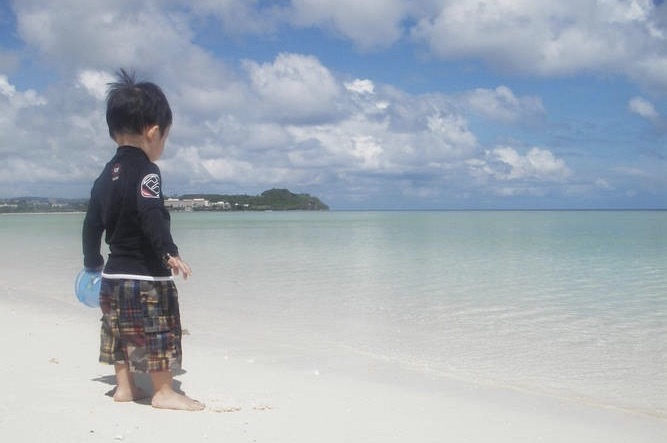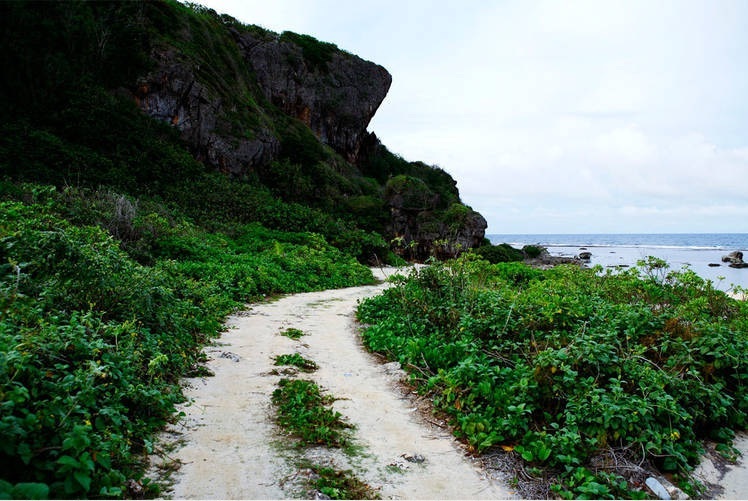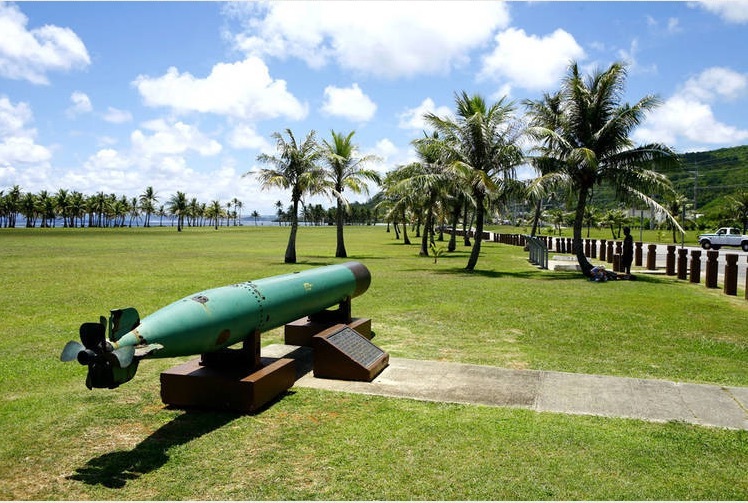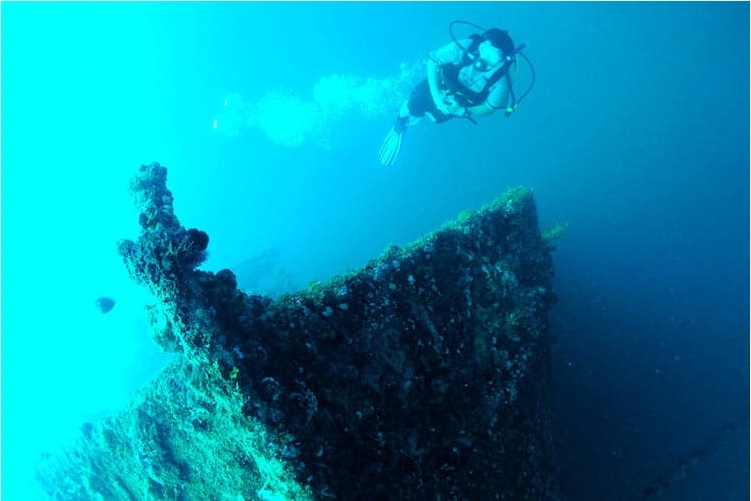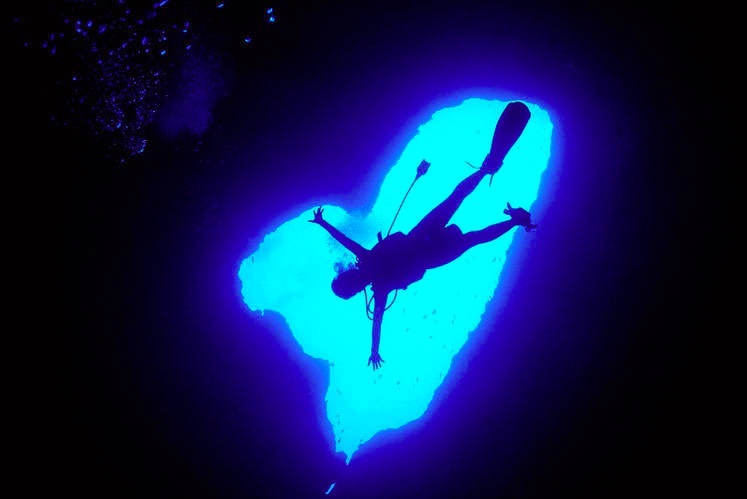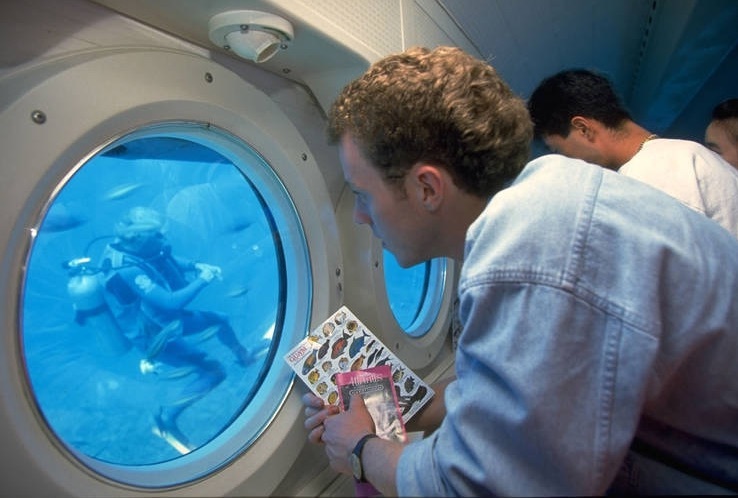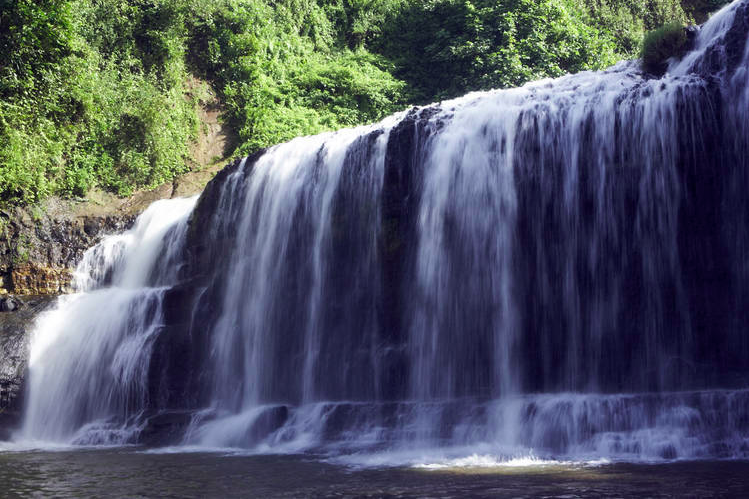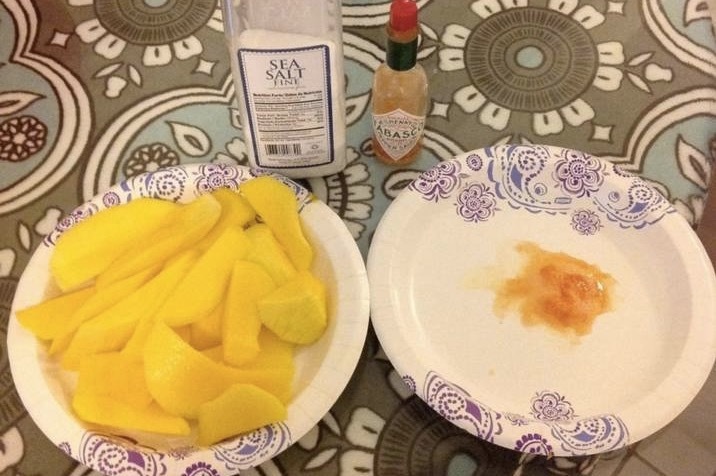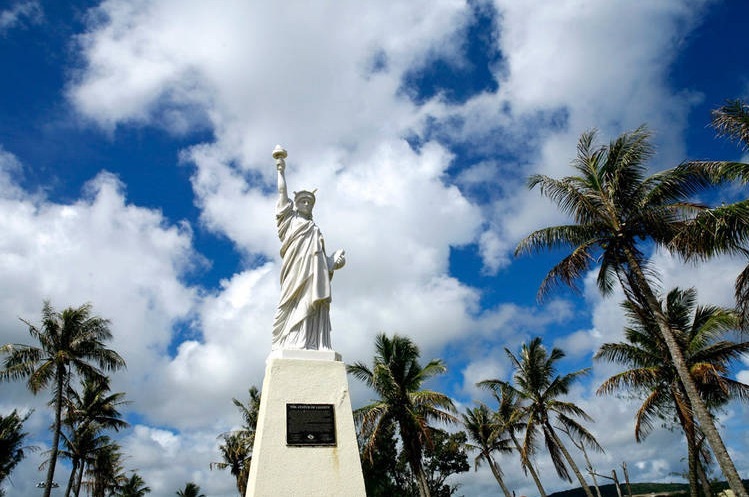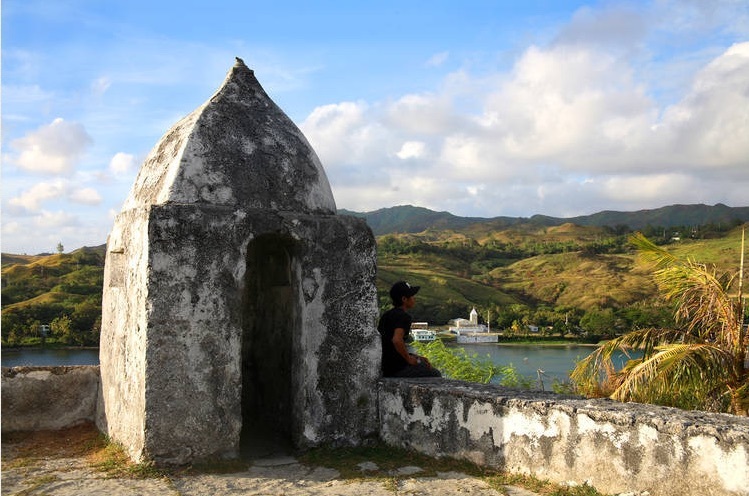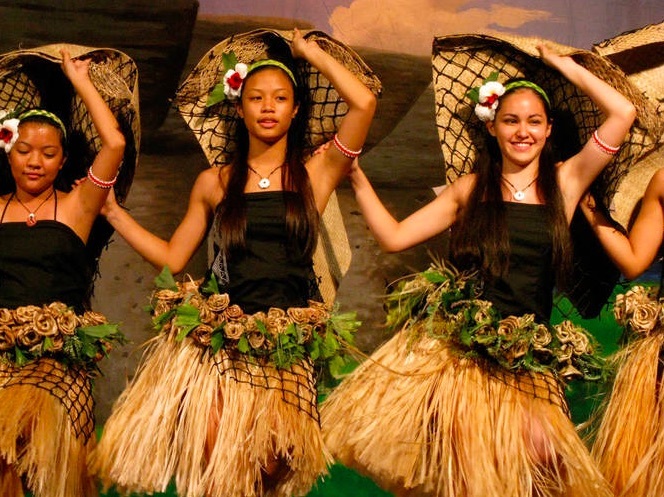All About Guam: Where It Is, What to Do, and the Strange Way They Eat Mangoes
By Jason Cochran
Guam is the part of the U.S.A. you may never have heard of. That's because this little 30-mile-long speck of an island in Micronesia is marooned in a wide swath of the Pacific Ocean—Tokyo and Manila, two of the largest nearby cities, are each still some 1,600 miles north and west, respectively. But that situation within reach of much of eastern Asia is exactly why the United States made Spain hand it over as a territory in 1898. Over several subsequent wars, this tropical island has proved to be a useful military base. Its rich local history stretches back centuries, but today, Guam's personality is a distinct mix of pan-Pacific and all-American.
Tumon Bay
The main drag on Guam is full of high-rise resorts, but how come you may not know anyone who has stayed in one? Because getting there from the rest of the United States isn't easy—or cheap. Round-trip airfares of $1,000 or more are the norm, and since there are no direct flights from the mainland, you'll have to change planes in Honolulu or even in Japan. That's why it's Asian tourists, particularly from Japan and South Korea, who make up the majority of visitors. They swarm here by the planeload to stock up on shopping from Uncle Sam's famous brands. Unlike Guam's geography, the malls are anything but lonely.
Tropical warmth under the tradewinds
The weather in Guam is predictably comfortable for a place in the tropics—the average is 86 degrees Fahrenheit (30 Celsius) year-round, and intermittent storms mark the rainy season from July to November. It's little wonder why some 1.4 million tourists a year come to visit an island with just 168,000 inhabitants. Typhoons also sometimes come calling, but U.S. government standards mean that most buildings are made of concrete, not wood, which has helped the island survive many storms.
Tagachang Beach
It wouldn't be a Pacific island without beaches, and Guam has plenty of them, some of them groomed and prime for tourism, and some rougher and more isolated, like remote Tagachang Beach in the north. The east-facing beaches are protected by an outer reef, making them safe for swimming.
War in the Pacific National Historical Park
The War in the Pacific National Historical Park honors everyone who served in the Pacific theater in World War Two, and with good reason: Some terrible things went down in Guam. Worst of them was the island's occupation by Japanese troops, whose abuses still haunt locals. At a terrible human cost, the Allies retook Guam on July 21, 1944, a date still celebrated each year as Liberation Day. Vestiges of the epic battles and occupation by both sides are preserved everywhere—guns, casements, shipwrecks, and memorial walls to those lost.
Shipwreck diving
Ironically, war violence left Guam with some beautiful peacetime activities: It has some of the best shipwreck dive sites on the planet, an underwater flotilla that includes freighters, tankers, and bombers. Apra Harbor is a particular hotspot for shipwreck diving. The German merchant trader SMS Cormoran went down in World War One and was joined in the next generation by the Tokai Maru, a Japanese passenger freighter sunk by an American submarine. The two wrecks now nuzzle each other beneath the waves, where divers can access old decks and engine rooms.
The Blue Hole
At the tip of the Orote Peninsula on the southern coast, this limestone shaft enraptures divers, who freefall past limestone walls and moray eels. About 125 feet down, a passageway enables them to slowly ascend using another path—although the drop beneath their flippers goes far deeper than diving safely allows.
Submarine fish viewing
Yes, lots of Guam's attractions lie under 120 feet of water, but if you're not a diver, there are still methods for getting under the surface. Atlantis Submarines goes five times a day, focusing on tropical fish. This part of the Pacific has some 950 types of fish and around 300 kinds of coral.
Talofofo Falls
Talofofo Falls, also in Southern Guam, is a popular destination for hikes, or as locals call them, "boonie stomps." While not as richly jungled or as mountainous as French Polynesia or Hawaii, there's still plenty of bush in the island's center and minimal development to mar it.
Pika
Don't order your dishes hot, because Guam's idea of heat will probably outflame yours. Locals love hot spice, which they call pika. In fact, Guam has ranked first in per-capita consumption of Tabasco sauce, at four ounces per person a year. Many people even eat it with mango fruit, accented with a dip in salt. As in Hawaii, Spam is also popular here—a legacy of the war years when canned meat was delivered by the boatload as a ration.
American-style living
Although Guam is remote, it benefits from its connection to the United States. For example, you can send a letter back to the mainland for the price of a simple first-class stamp. The creature comforts of American consumerism are also endemic to the island, such as at this supermarket. But not every perk of U.S. citizenship is extended to residents of Guam. Though they're allowed to vote in federal primaries, they can't cast votes for president, and their only representation is a nonvoting member of Congress.
"Where America's Day Begins"
Guam lies on the other side of the International Date Line, 13 hours ahead of Washington, D.C. That means it's the first American holding to enter every new day. The tourism department (Visit Guam) points out that the island is "Where America's Day Begins." It's also a place where Asian people begin their own American experiences, whether it's in the '50s-style diners packed with Japanese and Korean tourists, the cluster of shopping malls in the main town of Hagatna, or the t-shirt shops laden with Old Glory.
Fort Nuestra Senora de la Soledad
There's considerable Spanish influence, too. Fort Soledad is a remnant of the Spain-run galleon trade that plied the Pacific between Acapulco and Manila between 1565 (when Portuguese explorer Ferdinand Magellan arrived here two months before he died) and 1815. As such things go, when Mexico declared independence Spain had no more use for its four Guam forts, and in turn, Spain ceded Guam along with Puerto Rico to America following the Spanish-American War. The fort is one of the island's most popular tourist sites for stirring views, and it's on the U.S. National Register of Historic Places.
Chamorro culture
Amid all the Americanization, the local government realized it needed to do something to preserve and share its native Chamorro culture. So it helped create a Chamorro market in Hagatna. Now that site is a bastion of local, albeit touristy culture, with barbecue, music, souvenirs, and night markets on Wednesdays and Fridays. As with so much on Guam, the culture has been embellished by many outside influences: The surrounding architecture is Spanish, the barbecue sauce a mix of vinegar from American palates and soy sauce from Japan.





